You can let your player know what’s around him with a navigation bar.
A navigation bar is simply a horizontal representation of objects that are in front of the player or camera. You can display various information, e.g. enemy combatants, items, scene changers, event interactions or cardinal directions.
Navigation bars can be created using a Navigation HUD.
Open the ORK Framework editor and navigate to Menus > HUDs. Add a new HUD and change the following settings.
HUD Settings
- Name
Set to Navigation Bar. - GUI Box
Select Top Info. - HUD Type
Select Navigation.
- Display Range
Set to 135.
This defines the range in degrees that will be displayed in the navigation bar. - North Offset
Set to 0.
You can use this setting if north in your game isn’t the usual north direction in Unity. - Forward Offset
Set to 0.
You can use this setting to add an offset to the forward direction of the player/camera and have the navigation bar display a different range. - From Player
Disable this setting.
We’ll display the navigation bar using the camera’s direction. - Line Y Position
Set to 10.
This setting defines where the virtual line of the navigation bar will be placed in the GUI box.
The different HUD elements will be placed along that line.
Display Conditions
- In Control
Select Yes. - Shop, In Event, Changing Scene, Game Paused, Blocking Menu Screen
Select No. - In Battle, Target Selection, Performing Action
Select Ignore.
This setup will display the HUD while the player is in control, i.e. while running around in the field and in real time battles (since we can control the player in there as well).
The different parts displayed by the navigation HUD are defind using HUD Elements. Each element is used for separate information, e.g. cardinal directions, items or combatants. Higher indexed elements will be displayed above lower indexed elements. We’ll add several elements, click on Add Navigation Element to add a new element.
The first element will display the separations between the cardinal directions.
- Type
Select Separation. - Separations
Set to 5.
Click on Add Content to add a label to this element.
- Bounds (Content Label 0)
Set to X=0, Y=0, W=1, H=20.
The content bounds define the bounds of each content label within the bounds of the element. - Anchor
Select Upper Left. - Relative To
Select Upper Left. - Show Image
Enable this setting. - Color
Select Default Text.
The element’s bounds will be added to the position of of the individual elements along the virtual navigation line.
- Bounds
Set to X=-10, Y=-10, H=20, W=20.
Now we’ll add the cardinal directions. Each cardinal direction will be displayed in it’s own element. First, we’ll add north.
- Type
Select North.
Click on Add Content to add a label.
- Bounds (Content Label 0)
Set to X=0, Y=-5, W=20, H=20. - Anchor
Select Upper Left. - Relative To
Select Upper Left. - Text
Set to N. - Text Color
Select Yellow. - Bounds (Element)
Set to X=-10, Y=-10, H=20, W=20.
Copy the previous element and change the following settings.
- Type
Select East. - Text
Set to E.
Copy the previous element and change the following settings.
- Type
Select South. - Text
Set to S.
Copy the previous element and change the following settings.
- Type
Select West. - Text
Set to W.
Add a new element, this time we’ll display Scene Changers.
- Type
Select Interaction. - Range
Set to 30. - Any Interaction
Disable this setting. - Scene Changer Interaction
Enable this setting.
Click on Add Content to add a label.
- Bounds (Content Label 0)
Set to X=0, Y=0, W=20, H=20. - Anchor
Select Upper Left. - Relative To
Select Upper Left. - Show Image
Enable this setting. - Use Image
Enable this setting. - Image
Select SceneChanger.psd – can be found in Assets/Gizmos/. - Bounds (Element)
Set to X=-10, Y=-10, H=20, W=20.
It’s time to display Item Collectors. Copy the previous element and change the following settings.
- Item Interaction
Enable this setting. - Scene Changer Interaction
Disable this setting. - Image
Select ItemCollector.psd – can be found in Assets/Gizmos/.
Finally, we’ll add displaying enemies. Copy the previous element and change the following settings.
- Type
Select Combatant. - Combatant Type
Select Enemy.
This will display all combatants that are enemies of the player.
Optionally, we could also display different content for different factions. - Image
Select Combatant.psd – can be found in Assets/Gizmos/.
And that’s it – click on Save Settings to save the changes.
When playing the game, you’ll see a navigation bar in the top of the screen while running around in the field and in real time battles.
You might have noticed the Navigation Marker element type. Navigation markers can be used to mark positions or game objects in a specific scene. The Navigation HUD will not only display the marker in the scene it’s placed in, but can also display the marker at Scene Changers that lead to the scene – even when multiple scenes need to be crossed to get there.
In order to find the marker in a different scene, you need to scan your scenes for scene changers and spawn points to automatically create a map of all scenes. You can do this in World > Scene Connections by clicking on Scan All Scenes. Keep in mind that you need to rescan the scenes if you changed a connection (scene changer, spawn point), added new scenes or removed scenes.
Navigation markers can be added through Quests and the Event System.


